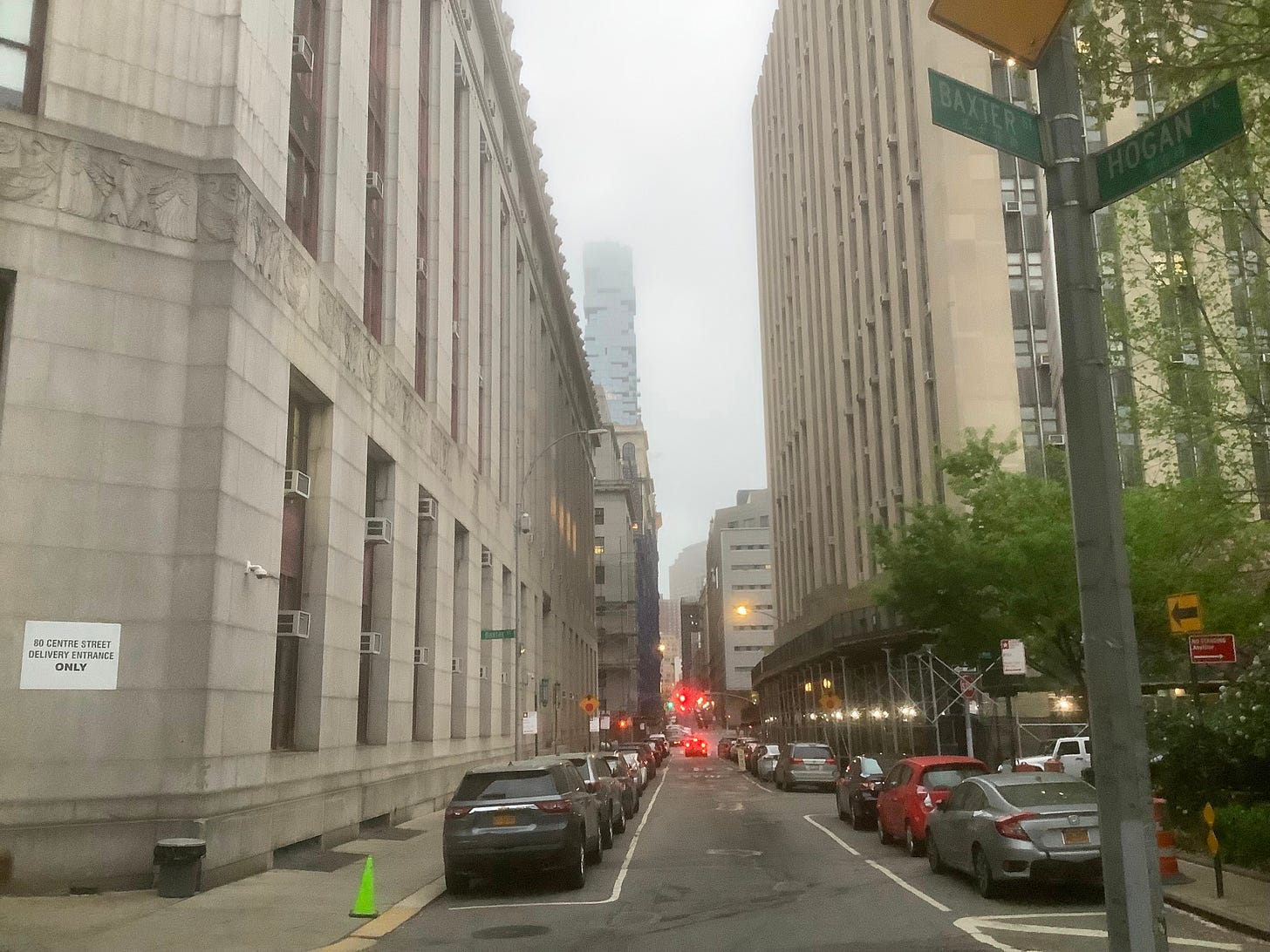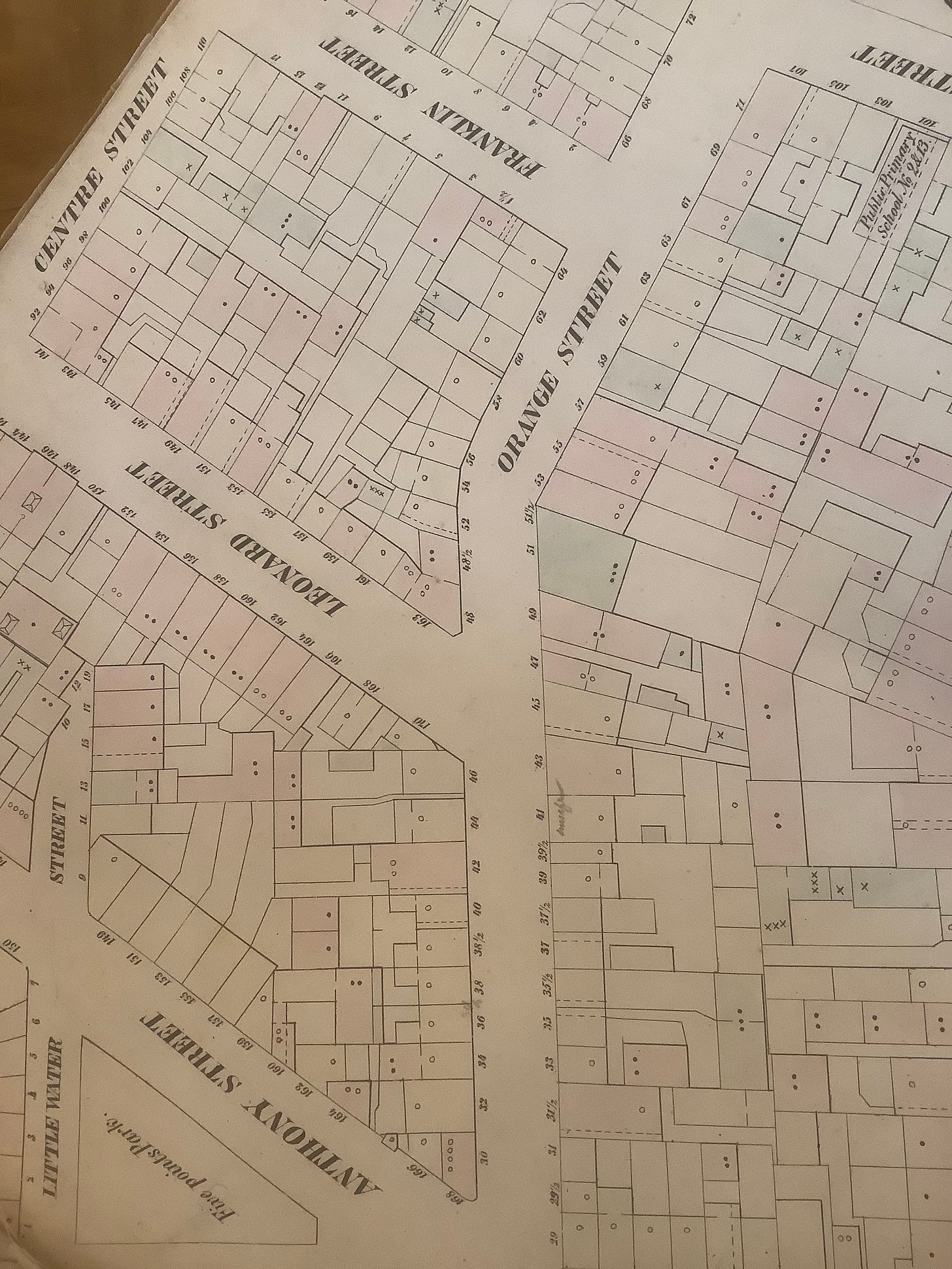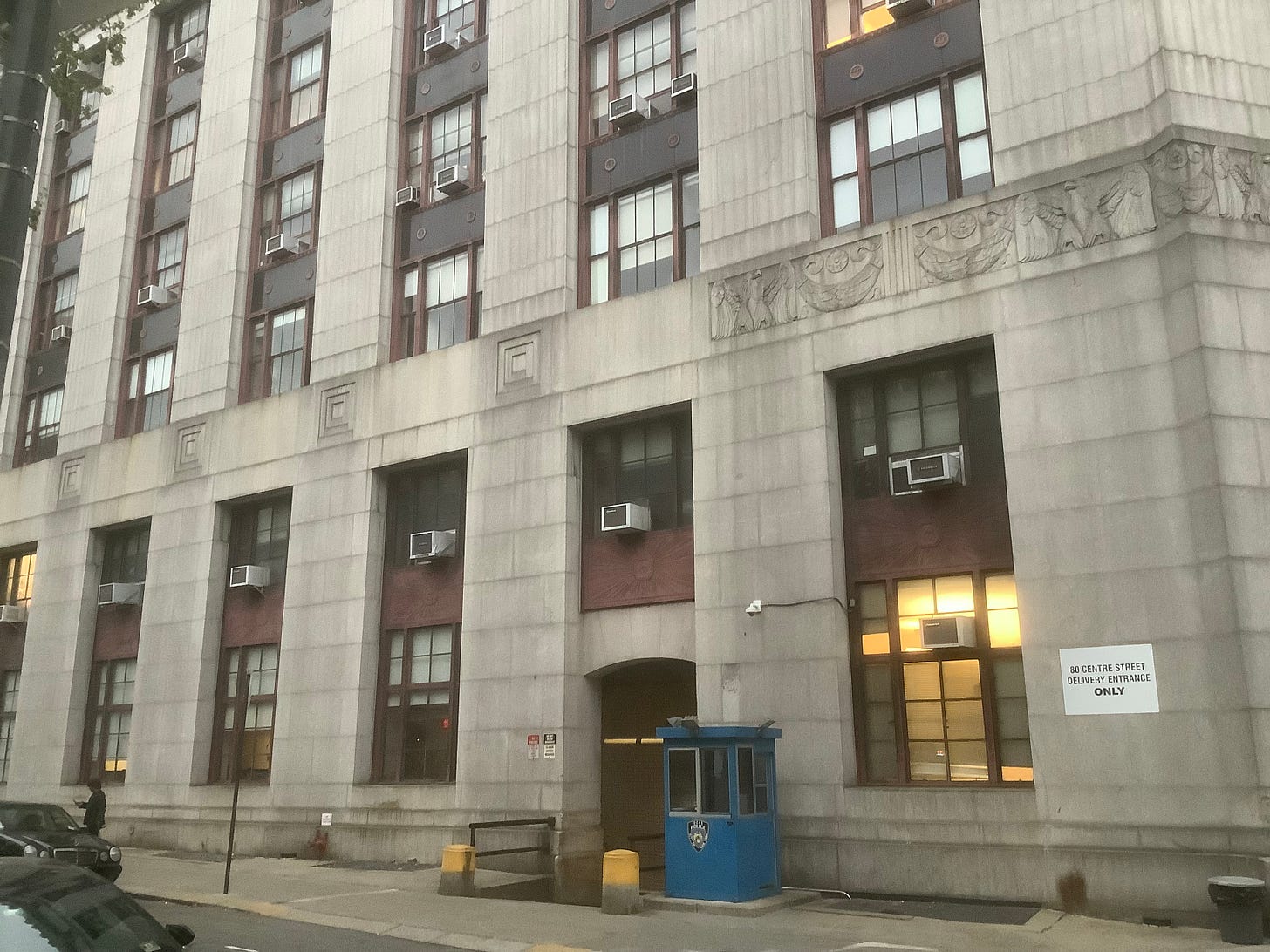Sites Associated with James McCune Smith and Family in New York City #8
Where Lavinia Smith’s Family Lived at 44 Orange Street

As I resume writing for the World of James McCune Smith, I’ll start by resuming my story of my visits to sites associated with his life in New York City way back in mid-April 2023, when I was there conducting research for his biography. Now that so much time has passed, memories of my excursions to these sites have faded somewhat. But hopefully, the photos I took along the way will help me reconstruct them pretty well.
The next site I headed for was around where Baxter Street (formerly Orange Street) and Hogan Place now meet. This was where McCune Smith lived with his mother Lavinia Smith and aunt Sally McCune at 44 Orange Street. We know of McCune Smith’s Aunt Sally because his close and lifelong friend Philip A. Bell wrote about her in one of a series of editorials about the ‘Underground Railroad in New York.’ In telling the story of Margaret Green’s rescue from slavery by the Smith and Bell families, Bell wrote that in the fall of 1816, ‘Mrs. Lavenia Smith and Mrs. Sally McCune, [mother and aunt of the late James McCune Smith,] brought the girl to our house….’[1] (Italics in original.) Sure enough, both Lavinia Smith and Sarah McCune (‘Sally,’ of course, is a diminutive of Sarah) appear in New York City directories within the next few years, with each listed at 44 Orange Street, between 1820 and 1822. Lavinia was only described as a widow. Sarah, however, was described as a widow in one entry, and as a teacher in another. There was another teacher listed at 44 Orange Street in those years – Mary Weaver.[2] Bell also left behind a record of her connection to McCune Smith. In his obituary for McCune Smith, Bell wrote that ‘His first tuition was received from “Grandma Weaver.”’[3] This apparently refers to Weaver tutoring McCune Smith, probably before he started attending the African Free School on Mulberry Street. (See my earlier post on the AFS.) ‘Grandma Weaver’ doesn’t appear to have had any family relation to McCune Smith. In any case, with two schoolteachers in his early childhood home, it’s no wonder that McCune Smith did so well at school. ‘Grandma’ may have been Weaver’s title of affection to the children in their community in the community, or she may have had a family connection to Bell. In 1829, Mary Weaver was baptized into the congregation at St Philip’s, the parish church of the Smith and Bell families. Lucretia Bell, Bell’s mother, served as the witness to Weaver’s baptism.[4]

44 Orange Street was also the address of another significant institution in McCune Smith’s life: the New-York African Society for Mutual Relief. Founded in 1808, the Society (often called the Mutual Relief Society) was a beneficial society dedicated to improving the lives and prospects of black New Yorkers.[5] McCune Smith later wrote that ‘In 1821, there were, in the city of New-York, among the colored people, only two Mutual Benefit Societies, to relieve the sick and bury the dead.’[6] One of these was the Mutual Relief Society, which moved into its multi-use buildings at 42-44 Orange Street in 1820. These included a boarding house, and its rents funded the Society’s mortgage.[7] Lavinia, Sarah, little James McCune Smith, and Weaver likely lived in that boarding house. McCune Smith would go on to mention the Society regularly in his writings, and he became a formal member in 1841.[8]

There are no known surviving images of the Mutual Relief Society’s buildings at 42-44 Orange Street. Today, the back of the huge Louis J. Lefkowitz State Office Building – of the New York County Court system – at 80 Centre Street stands approximately where the Society’s boarding house used to stand.
To be continued…
[1] Philip A. Bell, ‘Underground Railroad in New York: No. 1’, The Elevator, 18 January 1873.
[2] Thomas Longworth, Longworth’s American Almanac, New-York Register, and City Directory (New York: Thomas Longworth, 1820), 406, 464; William A. Mercein, Mercein’s City Directory, New-York Register, and Almanac (New York: William A. Mercein, 1820), 294, 429; Thomas Longworth, Longworth’s American Almanac, New-York Register, and City Directory (New York: Thomas Longworth, 1821), 458; Thomas Longworth, Longworth’s American Almanac, New-York Register, and City Directory (New York: Thomas Longworth, 1822), 296, 414.
[3] Philip A. Bell, ‘Death of Dr. Jas. McCune Smith’, The Elevator, 22 December 1865.
[4] ‘St. Philip’s Church Records, 1819-1869 - Reel 1: Baptisms: 1819-1969, Register 1819-1829’ (n.d.), 100–101, Manuscripts & Archives, Schomburg Center for Research in Black Culture, New York Public Library.
[5] John Jay Zuille, Historical Sketch of the New York African Society for Mutual Relief (New York: New York African Society for Mutual Relief, 1892), 4–5.
[6] James McCune Smith, ‘Address to the Gentlemen of the Legislature of New-York - Extending the Right of Suffrage (From the Albany Argus)’, The National Anti-Slavery Standard, 8 May 1845.
[7] ‘Abstract of the Title of the New York African Society for Mutual Relief’, 1851 1754, New York African Society for Mutual Relief Records, Reel 12, Schomburg Center for Research in Black Culture, New York Public Library; Longworth, Longworth’s 1821, 54; Longworth, Longworth’s 1822, 53; Zuille, Historical Sketch, 16; Leslie M. Harris, In the Shadow of Slavery: African Americans in New York City, 1626-1863 (Chicago: University of Chicago Press, 2003), 88.
[8] Zuille, Historical Sketch, 31.

